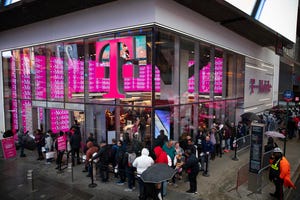Google's checking out 10GigE switches from multiple Taiwanese original design manufacturers (ODMs), industry sources say

Google (Nasdaq: GOOG)'s search for 10-Gbit/s Ethernet switches has taken it to Taiwanese original design manufacturers (ODMs), sources say, a further indication that certain types of 10-Gbit/s equipment are following their gigabit predecessors into commodity status.
A recent report from Nyquist Capital indicated that Google, which builds some of its own servers, has also built its own 10-Gbit/s switches, possibly using Broadcom Corp. (Nasdaq: BRCM) chips. (See Google Goes DIY With 10 GigE.)
Now other sources, requesting anonymity, say Google is considering ODM designs, too. One source says Google may have two or three ODM candidates in mind.
Another source says Quanta Computer Inc. , a large ODM better known for notebook computers, is headed to the Bay Area in mid-December to show Google a 10-Gbit/s switch based on chips from Applied Micro Circuits Corp. (Nasdaq: AMCC) and Marvell Technology Group Ltd. (Nasdaq: MRVL).
A Google spokeswoman says the company doesn't comment on its infrastructure activities.
Most sources assume Google wants to compare the ODM boxes to its own switch, or use them as second sources. But some are speculating that Google's "own" switch is itself an ODM design.
Either way, the fact that ODMs are getting into 10-Gbit/s Ethernet switches could be a harbinger of price drops and the usual commoditization that comes with the Ethernet name.
Conventional wisdom in Ethernet circles says low-end stackable switches tend to get cheap quickly, becoming a market left to ODMs. By scouting ODMs now, Google might be trying to get in on that process early.
One source thinks Google's moves are more a jab at Cisco Systems Inc. (Nasdaq: CSCO), which dominates the 10-Gbit/s Ethernet market. "With 10 Gbit/s Ethernet, you're kind of a slave to Cisco and their IOS. You have to buy their modules," the source says.
Most in the industry agree Google is probably looking to build just workgroup switches -- little, simple ones -- as opposed to the bigger, more complex switches. That would be a sigh of relief for vendors such as Force10 Networks Inc. (which touted Google as an early customer) or Woven Systems Inc. -- both of which deal in high-end systems.
— Craig Matsumoto, West Coast Editor, Light Reading
About the Author(s)
You May Also Like











